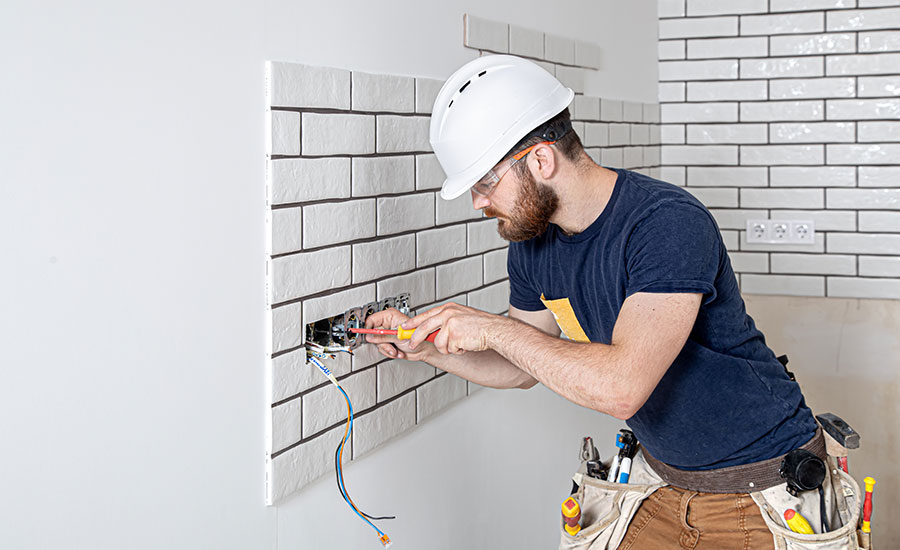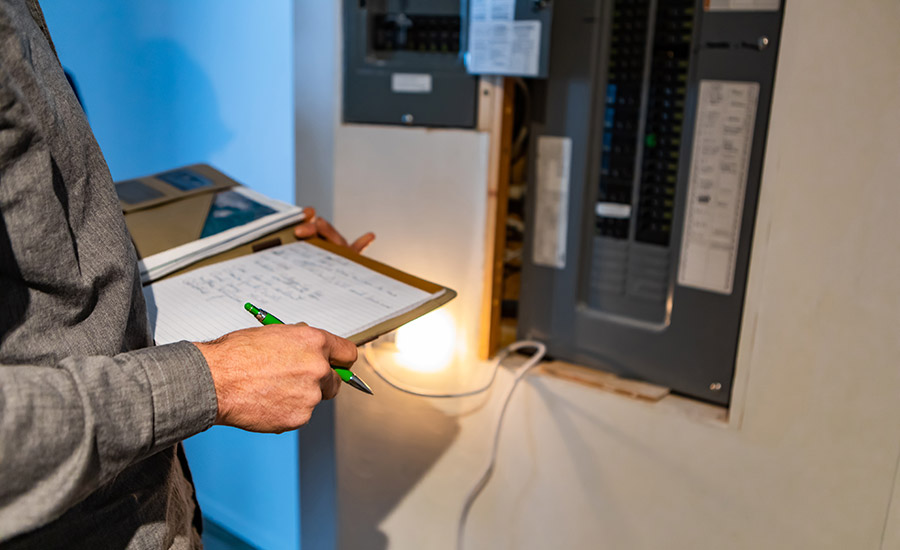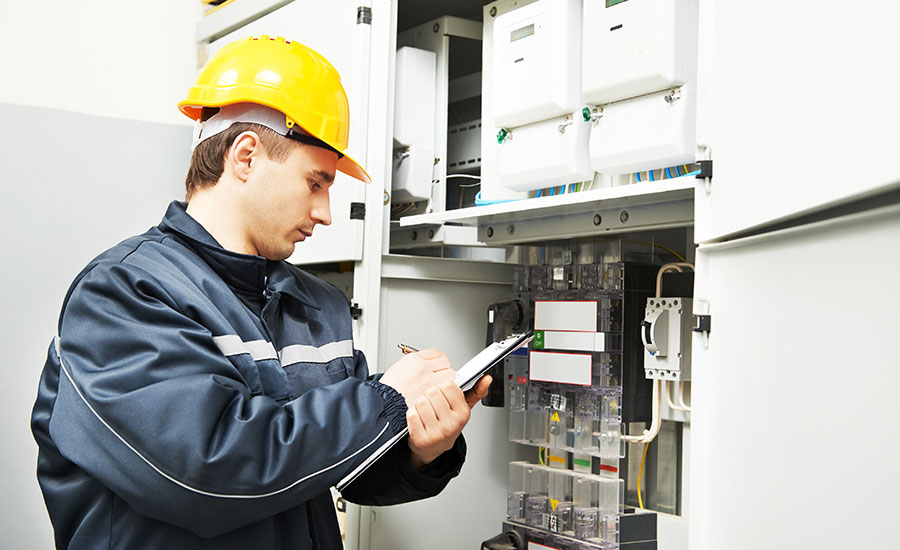
From checking circuit breakers to ensuring smoke detectors are working, a detailed electrical inspection checklist is key to making sure properties are safe to live or work in.
We’ll share what an electrical inspection checklist should include and explain how you can create, modify and store your own digital checklists, and access them from anywhere, whether at a construction site or at a residential home.
Table of Contents
Digitize your checklists.
Try doForms for free!
What Is An Electrical Inspection Checklist?
An electrical inspection checklist contains a list of tasks that electrical inspectors utilize to determine whether a property’s electrical system follows the guidelines stated by the National Electrical Code (NEC).
Typically, this checklist includes various tasks meant to evaluate the overall condition of a property’s electric wiring — from checking circuit breakers to ensuring ground fault circuit interrupters (GFCIs) are properly working.
Once a task is completed, the inspector can place a checkmark or write their initials next to the task to confirm that it’s complete. Completed checklists can be submitted to property owners and/or insurance companies and other relevant parties, then safely stored for record keeping.
Home Electrical Inspection Checklist vs. Commercial Electrical Inspection Checklist
A home electrical inspection checklist, also known as a residential electrical inspection checklist, is used when inspectors assess the electrical system within a home or other type of residential building.
On the other hand, a commercial electrical inspection checklist is used to assess potential electrical hazards within commercial buildings and facilities — think office buildings, retail stores and hotels.
While similar, the items on each checklist can vary, based on the different electrical wiring and guidelines within a home versus a commercial building.
When Is A Home Electrical Inspection Checklist Used?
A home electrical inspection checklist is used by an inspector when a homeowner:
- Buys a new home
- Performs major home renovations
- Wants to perform checks on old electrical wiring

An electrical inspection checklist allows an inspector to ensure that a property follows the guidelines stated by the National Electrical Code
Residential Electrical Inspection Checklist Template
Here’s what an electrical inspection checklist should include:
Main Electric Panel
- Check the main electric panel to find the date of when it was last inspected
- Check to make sure that the wires inside the main electric panel are securely connected to the circuit breakers. Loose wires pose as a fire hazard.
- Check to ensure the main electric panel is properly grounded
- Check to make sure all connections are secure
- Check for rust and other signs of water damage. Replace the main electric panel if there are signs of corrosion.
Electrical Boxes
- Verify that all electrical boxes are installed in accessible locations such as junctions, outlets and pull points
- Ensure that high and low voltage conductors in the same junction box are separated
Cables
- Ensure that all cables are mounted with a cable protector plate — a steel plate that protects cable wires
- Ensure that all electrical wires are in good condition. Fix electric wires that are frayed, dangling from ceilings or walls, or popping out of their protective coating.
Outlets And Switches
- Check outlets and switches to ensure that they are properly grounded
- Ensure that hallways measuring 10 feet or more have at least one outlet
- Ensure that there are safety covers on all unused outlets that are accessible to children
- Replace any missing or broken wall plates
- Ensure that wall switches include grounded conductors to prevent electric shock
- Test each switch by flipping it on and off to make sure it is functioning properly
- Replace outlets that have loose-fitting plugs to prevent overheating
- Inspect each switch for any signs of damage, such as cracks or loose connections
- Check the wiring behind the switch plate for any signs of damage or loose connections
- Check to make sure all switches are working properly — check the circuit breaker if not
Circuit Breakers
- Check to make sure the circuit breakers are working properly to prevent electric shock, damaged equipment or house fires
- Ensure that surge protectors are installed on all circuit breakers to prevent damage caused by power surges
- Ensure that circuit breakers are the correct current rating for their circuit
- Check to make sure that circuit breakers are not at risk of circuit overload, to prevent potential blackouts
Ground Fault Circuit Interrupters (GFCIs)
- Make sure GFCIs are working properly to prevent electrocution. GFCIs are usually installed in areas where water may come into contact such as laundry rooms, kitchens and bathrooms.
- Replace GFCIs if needed. Typically, GFCIs last 7-10 years.
Lighting
- Make sure that light fixtures are properly grounded
- Make sure that light bulbs are securely screwed to prevent overheating
- Make sure that light bulbs and sockets have the same wattage to prevent overheating
- Remove dust from light fixtures to maximize their shelf life
- Consider a group replacement of all light fixtures (if one light bulb isn’t working) to ensure efficient lighting
Smoke Detectors
- Ensure that smoke detectors are located in the basement, inside all bedrooms, outside each sleeping area, and on every level of the house
- Install wall-mounted smoke alarms 4-12 inches away from the ceiling (to the top of the alarm)
- Test the alarms by pressing the “test” button on the smoke detector. This should cause the alarm to sound. If the alarm does not sound, check the batteries and replace them if necessary.
- Clean smoke detectors to remove dust and debris. Use a soft brush or a vacuum attachment to clean the sensors.
- Ensure that smoke detectors are interconnected with 14-3 or 12-3 cables
- Replace smoke detectors every 10 years
Appliances
- Check installed appliances — such as HVAC systems — to ensure that they are properly wired and grounded
- Make sure the appliance’s cords and plugs are in good condition
- Listen for any unusual noises or smells coming from the appliance, which are signs of a malfunction
- If the appliance has filters, such as a refrigerator or air conditioner, make sure that they are clean and in good condition. Clogged filters can reduce the efficiency of the appliance.
Create a custom electrical inspection checklist.
Try doForms for free!
Benefits Of An Electrical Inspection
An electrical inspection is an important part of evaluating the electrical system of a home or building.
It ensures that all wiring is correct, up-to-date and safely connected, minimizing the risk of fires, electrical shock, and other hazards.
Key benefits of an electrical inspection include:
1. Prevent House Fires And Other Accidents
According to the National Fire Protection Association, faulty electrical systems is one of the top causes of house fires in the United States.
An electrical inspection allows property owners to identify any potential safety hazards and ensures that the home or building’s electrical system is safe and in good working condition.
2. Save Money
Fixing electrical issues can be costly. For example, rewiring a 2,000 square-foot home can cost anywhere between $4,000 to $8,000.
Evaluating a home or building’s electrical system allows property owners to pinpoint issues as they arise, so they can schedule more cost-effective repairs.
3. Boost Energy Efficiency
Whether it’s removing dust from light bulbs to maximize shelf life or cleaning clogged filters in an air condition unit, an electrical inspection identifies areas in a home or business where energy is wasted, and remedies the situation to maximize efficiency.
4. Follow NEC Guidelines
An electrical inspection ensures that the electrical system in a home or business follows the National Electrical Code (NEC), a standard that provides guidelines for the safe installation of electrical wiring and equipment in the United States.
Also Read:

An electrical inspection identifies future electrical issues before they become expensive problems
Create A Custom Electrical Inspection Checklist With doForms
Ready to take your checklists to the next level and go the paperless route? Check out doForms!
doForms is a mobile forms solution that allows you to:
- Build and edit digital checklists
- Save checklists in a secure, centralized location
- Easily access checklists from anywhere
With the user-friendly doForms mobile app, you can create custom checklists or select a template from our extensive library of forms.
Then, easily access your mobile forms from anywhere — whether you’re on the road or performing an inspection on-site.
doForms even works without the need to connect to WiFi. With offline form submissions, you can fill out forms without a stable internet connection.
On top of creating electrical inspection checklists, switching to mobile forms allows you to:
- Create electrical installation condition reports
- Build HVAC maintenance inspection checklists
- Take notes of NEC violations when conducting electrical inspection checklists
- Take photos on-site and attach them to inspection forms
- Report near misses when conducting electrical inspections
- Dispatch work orders to users across devices
- Run and schedule automated reports
- Manage tasks, time logs and employee schedules
- Track locations of upcoming electrical inspections
Streamline data collection, workflow management, reporting and more when you go digital and switch to doForms.
Ready to go the paperless route?
Start your free trial!
Wrapping Up On Electrical Inspection Checklists
An electrical inspection checklist helps inspectors make sure that electrical wiring throughout a home or business is safely installed and secure.
By ensuring that the building you’re inspecting is clear of NEC violations, you can minimize potential hazards such as electrocution, electric sparks and fires.
As an advanced mobile forms solution for businesses of all sizes, doForms allows you to say goodbye to messy paper checklists and get organized, from inspections to data collection, record keeping, scheduling and more.




